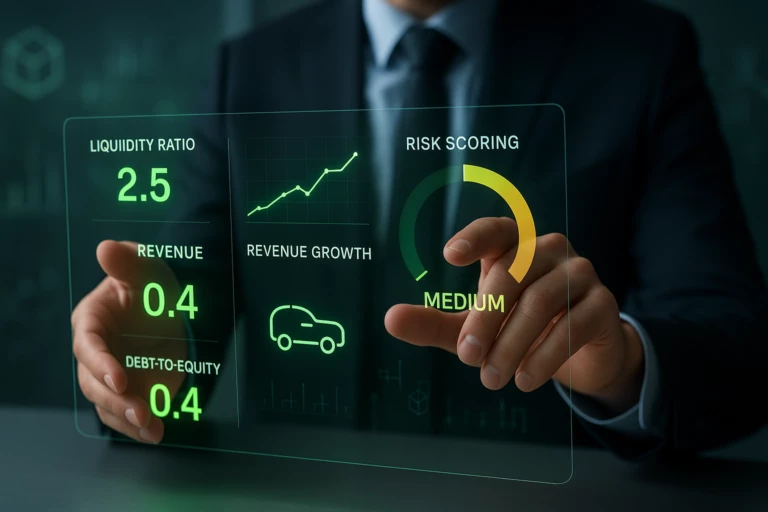Automated Financial Scoring: Optimizing Third-Party Assessment
In today’s world of interconnected supply chains, businesses can no longer afford to manage their supplier relationships blindly. A partner’s financial health can quickly become a critical risk factor. This is precisely the view of procurement leaders, who rank the risk of third-party financial failure as their number one concern, according to the AgileBuyer study. […]
How to Assess the Financial Health of Your Third-Party Partners
Assessing the financial health of third-party partners has become a crucial element in ensuring the operational resilience of your supply chain. According to the 2023 report from the Financial Stability Board, economic interdependencies have significantly increased in recent years—bringing flexibility and innovation but also creating potential risks for financial stability if not properly managed. Understanding […]
Understanding Key Financial Indicators for Evaluating Your Third-Party Partners
In an economic environment where over 60% of European companies have faced operational incidents linked to their third-party partners, as highlighted by the European Central Bank in its Annual Report on Supervisory Activities, understanding and mastering key financial indicators has become essential for evaluating the stability of your business partners. These third-party assessment tools help […]
Understanding Scope 3 Assessment in the Value Chain
Anticipating Your Carbon Footprint by Assessing Suppliers and Identifying Scope 3 Maturity In a context where third-party environmental governance is becoming a major strategic issue, companies must now evaluate and manage the carbon impact of their entire value chain. Scope 3 assessment represents a considerable but essential challenge to ensure organizations’ operational resilience in the […]
Artificial Intelligence and Third-Party Risk Management: A Strategic Alliance
The integration of artificial intelligence into third-party governance represents a major transformation for organizations seeking to strengthen their operational resilience. This technology enables traditional collaborative third-party assessment processes—often laborious—to evolve into agile, proactive mechanisms. According to Gartner, by 2026, more than 80% of enterprises will have used AI models or deployed AI-enabled applications in production, […]
Understanding the Scope 3 Data Collection Methodology under the CSRD
The Corporate Sustainability Reporting Directive (CSRD) is radically transforming the landscape of non-financial reporting in Europe, imposing stricter third-party governance in terms of sustainability. As part of the European Green Deal, this directive is a key pillar of the EU’s strategy to channel financial flows toward a more sustainable economy. Although its rollout is currently […]
Pooled Due Diligence: A Strategic Lever for Third-Party Risk Management
In an increasingly demanding economic environment, companies are turning to pooled due diligence processes to optimize third-party governance and strengthen their operational resilience. This collaborative approach involves sharing the efforts and resources related to third-party partner assessments, particularly critical suppliers. By centralizing these tasks, organizations—both within the same group and even among competitors—can increase efficiency […]
Digital Transformation and Third-Party Governance: A New Era for Risk Management
Digital transformation is profoundly redefining the way organizations manage their relationships with third-party partners. In this rapidly evolving context, third-party governance is taking on a crucial strategic role, moving from simple document collection to collaborative compliance assessment. This shift is part of a broader movement toward Third Party Governance and Risk & Compliance (TPGRC), which […]
Understanding Third-Party Cybersecurity Maturity: Keys to Effective Assessment
Third-party governance has become a major strategic issue in an economic context marked by the growing interdependence between companies and their external partners. According to Gartner, 45% of cyberattacks in 2025 will originate from third parties, highlighting the urgency of a structured evaluation approach. Operational resilience against these threats now requires a shift from simple […]








